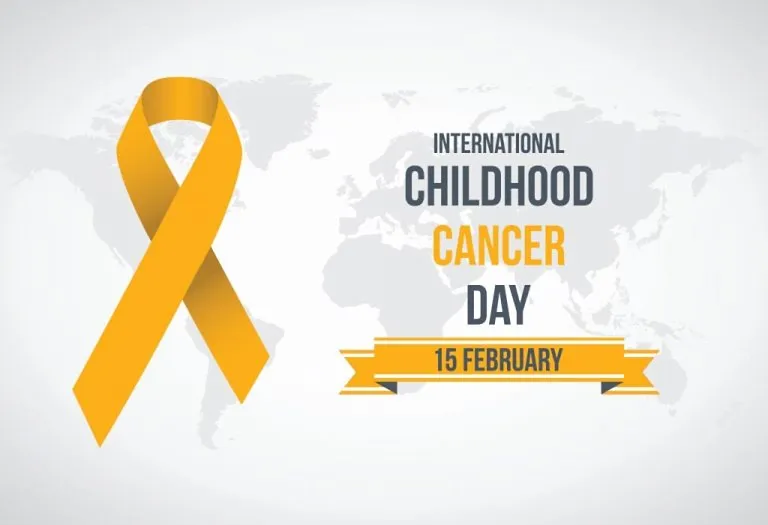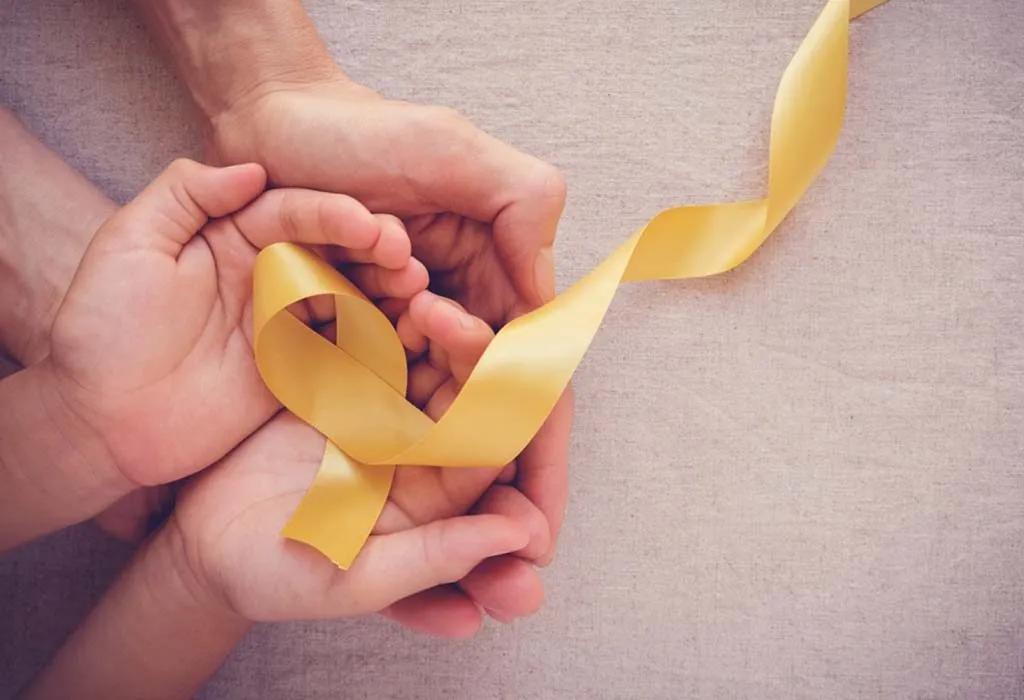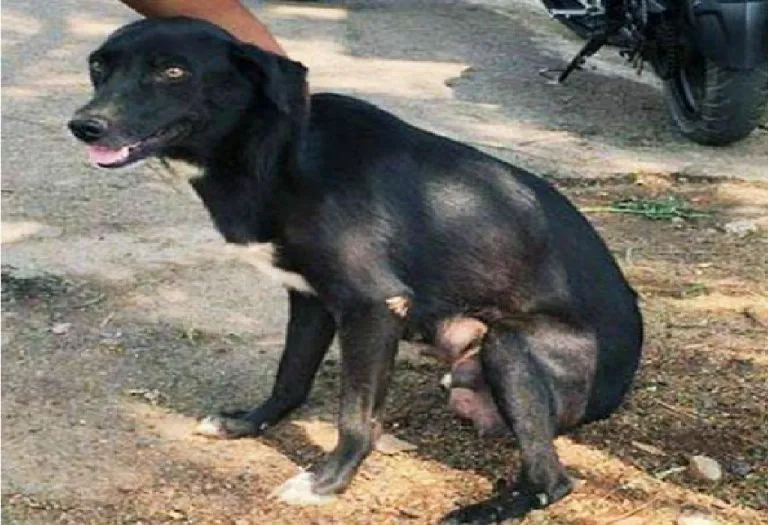International Childhood Cancer Day – History, Significance and Facts
Cancer, a life-threatening disease, can affect anyone, anytime, irrespective of their age and gender. It can disrupt the smooth functioning life of an individual, be it a young adult or a senior citizen. Children, too, are not spared from this disease; in fact, cancer is a leading cause of death in children and adolescents. To raise awareness about childhood cancer, Childhood Cancer International (CCI) declared February 15 as the day to observe International Childhood Cancer Awareness Day (ICCD).
Read on to know the history, significance, facts, and more about this day!
What Is Childhood Cancer Day?
International Childhood Cancer Day (ICCD) is observed annually on February 15, to raise awareness about childhood cancer, and to lend support to children and adolescents with cancer, cancer survivors, and their families.
The day aims to develop a deeper understanding of this ailment around the world. It emphasises the need for global efforts to ensure better access to treatment for children worldwide.
When Is Childhood Cancer Day?
International Childhood Cancer Day is observed on February 15 every year.
History of Childhood Cancer Day
International Childhood Cancer Day was first observed in 2002 by CCI, a global network of 170+ organizations, childhood cancer support groups, childhood cancer survivors associations, and cancer societies, spread over 93 countries and across five continents.
The idea of celebrating this day is based on the core belief of CCI, that every child and adolescent suffering from cancer deserves to receive the best possible medical and psychological care, despite the country they live in, the race they belong to, or their financial and social status.
Significance of Childhood Cancer Day
Why does International Childhood Cancer Day exist?
The importance of International Childhood Cancer Day lies in its role as a global advocate for the needs of children and adolescents afflicted with cancer, who require comprehensive support—medical, financial, and emotional.
Childhood cancer is a significant cause of non-communicable death among children and adolescents in both developed and developing countries. A lack of accurate knowledge about this disease, delays in diagnosis, and insufficient access to proper treatment and care can often lead to tragic outcomes.
To address these challenges and increase awareness, International Childhood Cancer Day (ICCD) was established. ICCD is a vital global campaign that mobilizes individuals and organizations to support children with cancer, their families, and cancer survivors. It plays a crucial role in creating awareness about childhood cancer and highlights the need for improved access to treatment for children worldwide, underscoring the importance of International Childhood Cancer Day in the global health landscape.
Objectives
The main objectives of International Childhood Cancer Day are to address and support the multifaceted needs of children and adolescents with cancer, as well as their families. These objectives for 2024 include:
- Raising Global Awareness: Enhancing understanding and awareness about childhood cancer, including the diverse challenges and inequalities faced by those affected by this disease.
- Enhancing Healthcare Accessibility and Treatment Options: Focusing on expanding the availability of healthcare services globally and delivering vital cancer treatments for children and adolescents, with the goal of guaranteeing equitable access to top-quality treatment and care for every child, irrespective of their geographic location.
- Comprehensive Support: Offering palliative care and supporting children with cancer and their families, emphasizing the need for emotional, financial, and medical assistance.
- Community Participation and Global Engagement: Encouraging community participation and support at all levels, from healthcare professionals to societal influencers, and utilizing digital platforms for wider engagement and sharing of experiences.
- Customizing Approaches for Regional Specificity: Modifying the campaign’s strategies to cater to the distinctive requirements of various regions, thereby ensuring that the campaign remains pertinent and effective within local contexts.
- Creating a Lasting Legacy: Building a lasting legacy of awareness, action, and positive change in the field of childhood cancer care, with a focus on the long-term impact of the campaign.
These objectives for 2025, to raise awareness, advocate for better care, and inspire solutions for childhood cancer.
Childhood Cancer Day – Theme
For 2025, the theme of International Childhood Cancer Day (ICCD) Inspiring Action: Building on Insights to Develop Actionable Solutions. Initiated by Childhood Cancer International (CCI) and the International Society of Paediatric Oncology (SIOP), the 2025 focus, titled “Unveiling Challenges,” seeks to bring to light and increase awareness of the varied and complex obstacles encountered by children with cancer and their families. This effort invites global participation to contribute personal experiences and insights, enhancing our collective understanding of childhood cancer’s challenges worldwide. Building on the previous theme, “better survival is achievable #throughourhands,” this year’s theme continues to propagate hope and underlines the significance of joint efforts in tackling and surmounting these challenges. Keeping in line with the emblem of growth and renewal as symbolized by the ‘Tree of Life’ in the previous campaigns, ICCD 2025 emphasizes that the cure for childhood cancer and ensuring the well-being of survivors is possible through unified endeavors and shared objectives.
Childhood Cancer Day Symbol
The awareness symbol for International Childhood Cancer Day is a gold ribbon. It’s the symbol for all types of cancer that affect children and adolescents. The gold ribbon was decided as the universal symbol for raising awareness about childhood cancer in the year 1997. Many colours were considered for the same, but gold was agreed upon as the final choice, as it represented the most precious thing in parents’ lives—children.
Who Can Get Involved?
Individuals and organizations can show their support to raise awareness about childhood cancer and make it a global health priority. There are various ways to observe International Childhood Cancer Day and contribute to the cause.
1. Connect with Affected Children
Offer comfort and support to children undergoing cancer treatment. Personal interactions can bring hope and encouragement on this challenging journey.
2. Educate and Inform About Childhood Cancer
Create and distribute educational materials like brochures or digital content to disseminate vital information about childhood cancer, its treatment, and resources available for support.
3. Participate in the Advocacy Campaign
Join forces with organizations like Childhood Cancer International and the International Society of Paediatric Oncology to support their advocacy efforts, helping to spread a message of hope and the necessity of accessible treatment.
4. Enhance Awareness Through Education
Increase your understanding of childhood cancer and share this knowledge with others. Utilize social media, community events, or personal conversations to educate those around you.
5. Support Through Charitable Donations
Consider donating to charitable organizations dedicated to childhood cancer. Your contributions can aid in treatment and research, providing essential support to affected families.
6. Volunteer Your Time and Skills
Offer your time and skills by volunteering with organizations that support children with cancer. Whether it’s local events or online initiatives, your involvement can make a difference.
7. Organize Fundraising Activities
Engage your community by hosting fundraising events. Creative and meaningful activities can rally support for childhood cancer causes and raise necessary funds.
8. Provide Direct Assistance to Families
Extend a helping hand to families in your community affected by childhood cancer. Whether it’s emotional support, running errands, or offering practical help, your involvement can be invaluable.
What Are the Common Childhood Cancers?
As per a research paper by the Indian Pediatrics, the most common types of cancer in children are:
- Leukaemia
- Lymphoma
- CNS tumours (brain cancer)
- Genitourinary tumour
- Bone tumour
- Eye tumour
- Gastrointestinal tumour
- Liver tumour
Facts About Childhood Cancer
Here’s some information about childhood cancer that you may not have known before:
- Cancer is a leading cause of death for children and adolescents all over the world, and around 300,000 children, between the ages of 0 and 19 years, are diagnosed with cancer every year.
- Childhood cancer is hard to diagnose and prevent, though early diagnosis and proper treatment can help successfully treat cancer in children 70% of the time.
- The average age of children when they are diagnosed with childhood cancer is 6 years.
- About two-thirds of childhood cancer patients tend to suffer chronic health problems.
- An estimated 400,000 children around the world develop cancer each year, only half of whom are ever diagnosed.
- Advances in precision medicine trials are helping to identify the most effective treatments for each individual child’s cancer, based on their DNA, RNA, and protein data.
FAQs
1. What types of cancer are most prevalent in children?
Among children, the most frequently encountered types of cancer are lymphoblastic lymphoma, mature B-cell lymphoma, and anaplastic large cell lymphoma. Cancers affecting the blood, brain, and nervous system are also quite common in pediatric cases.
2. How often does cancer occur in children?
Childhood cancer is relatively rare. As defined by the U.S. Rare Diseases Act of 2002, it is considered a rare disease because it affects fewer than 200,000 individuals annually.
3. Can children be successfully treated for cancer?
Yes, there is a high success rate in treating childhood cancer. A significant majority of children who undergo treatment are able to achieve a cure.
4. What advancements have been made in childhood cancer treatment?
Recent years have seen significant advancements in targeted therapies and immunotherapies, which have improved treatment outcomes and reduced side effects for children with cancer.
5. What contributes to the risk of developing childhood cancer?
The risk factors of childhood cancer are not fully understood. In most cases, childhood cancers arise from random genetic mutations and are not strongly linked to environmental or lifestyle factors. Some cancers, however, may be influenced by genetic predispositions or rare hereditary conditions.
Having a loved one diagnosed with this disease can be traumatic, especially when it’s your child. Being informed about the disease, and providing timely diagnosis, treatment, and palliative care may help treat it.
Also Read:
Cancer in Kids
Lymphoma in Children
Significance of World Cancer Day
Was This Article Helpful?
Parenting is a huge responsibility, for you as a caregiver, but also for us as a parenting content platform. We understand that and take our responsibility of creating credible content seriously. FirstCry Parenting articles are written and published only after extensive research using factually sound references to deliver quality content that is accurate, validated by experts, and completely reliable. To understand how we go about creating content that is credible, read our editorial policy here.























